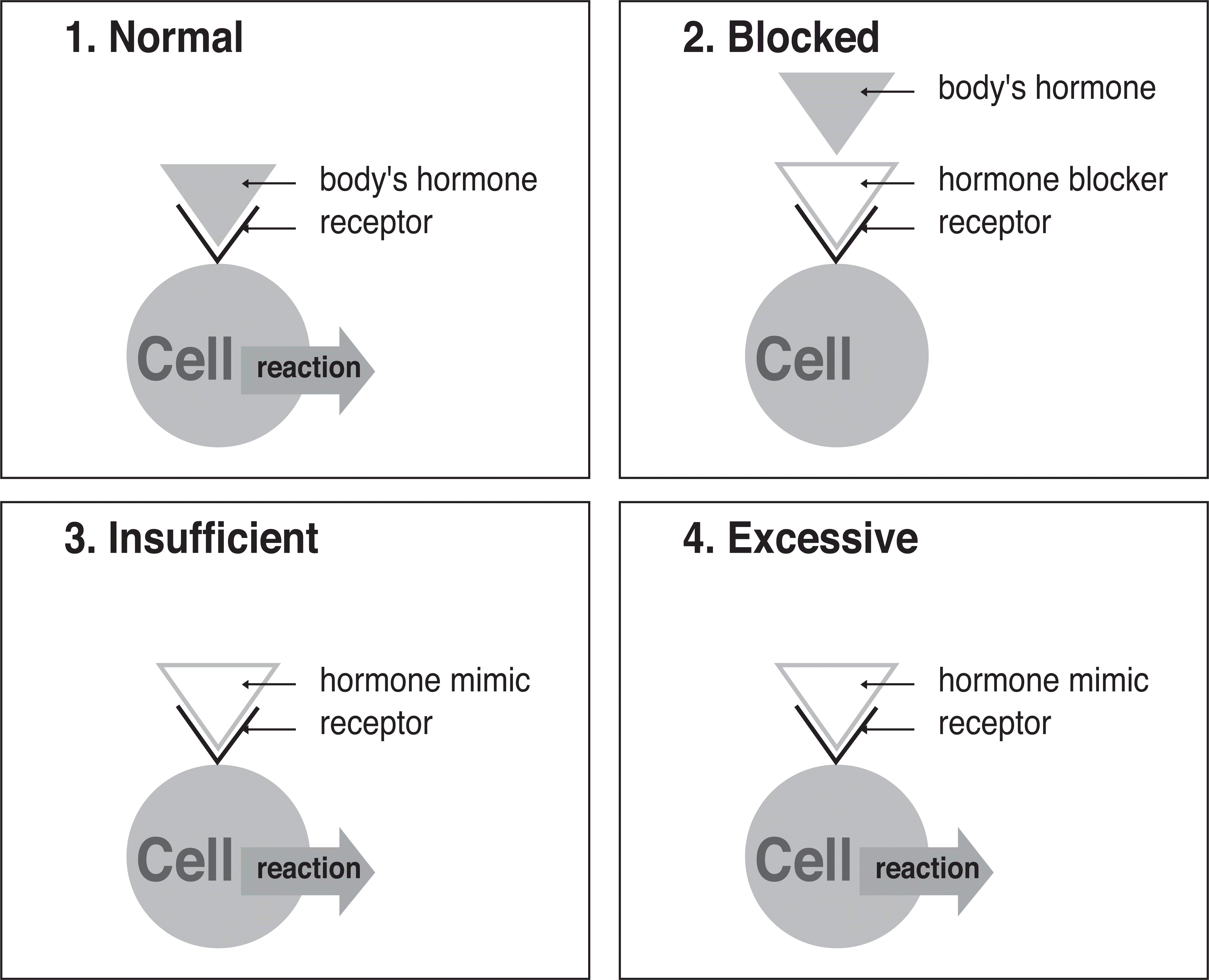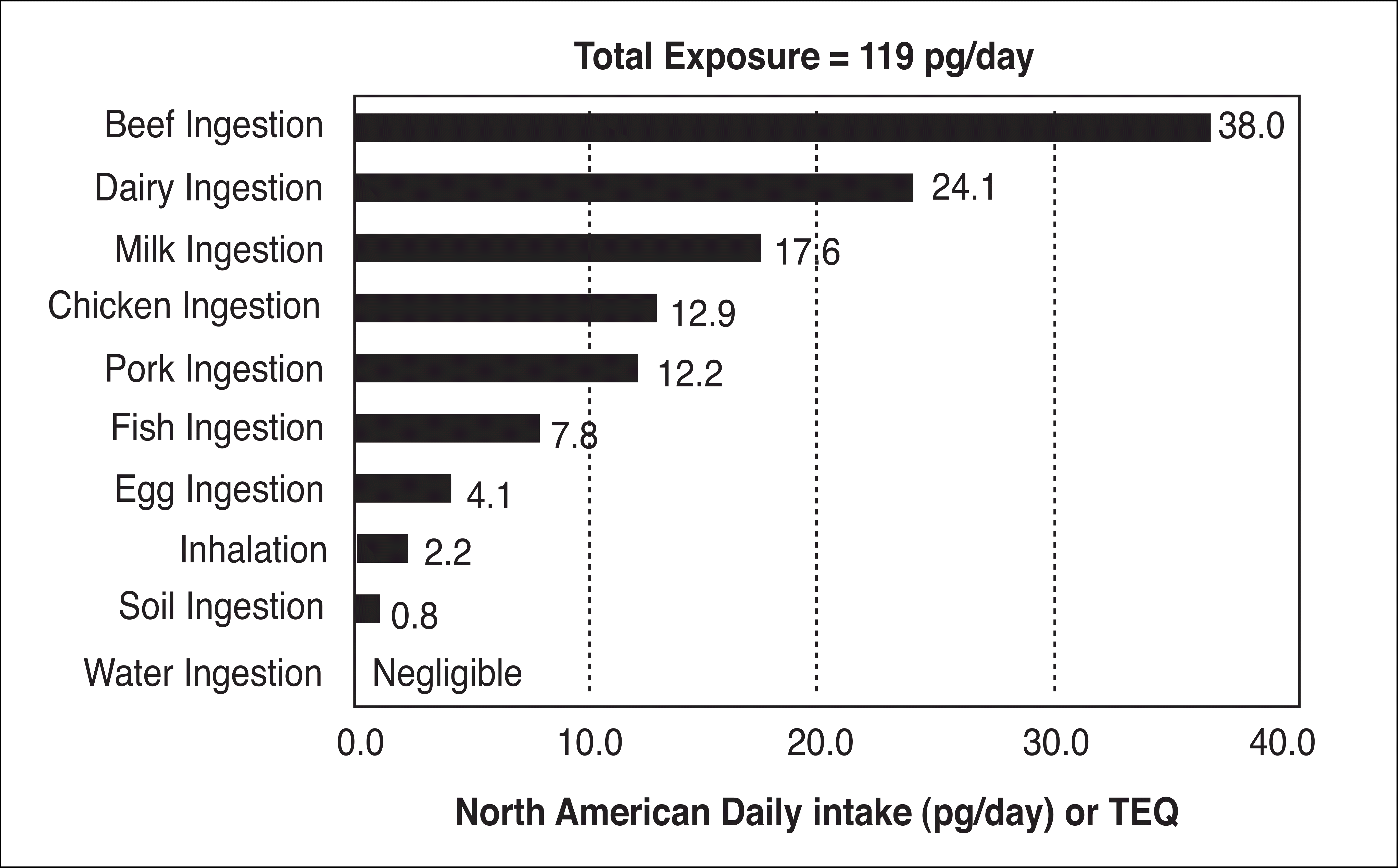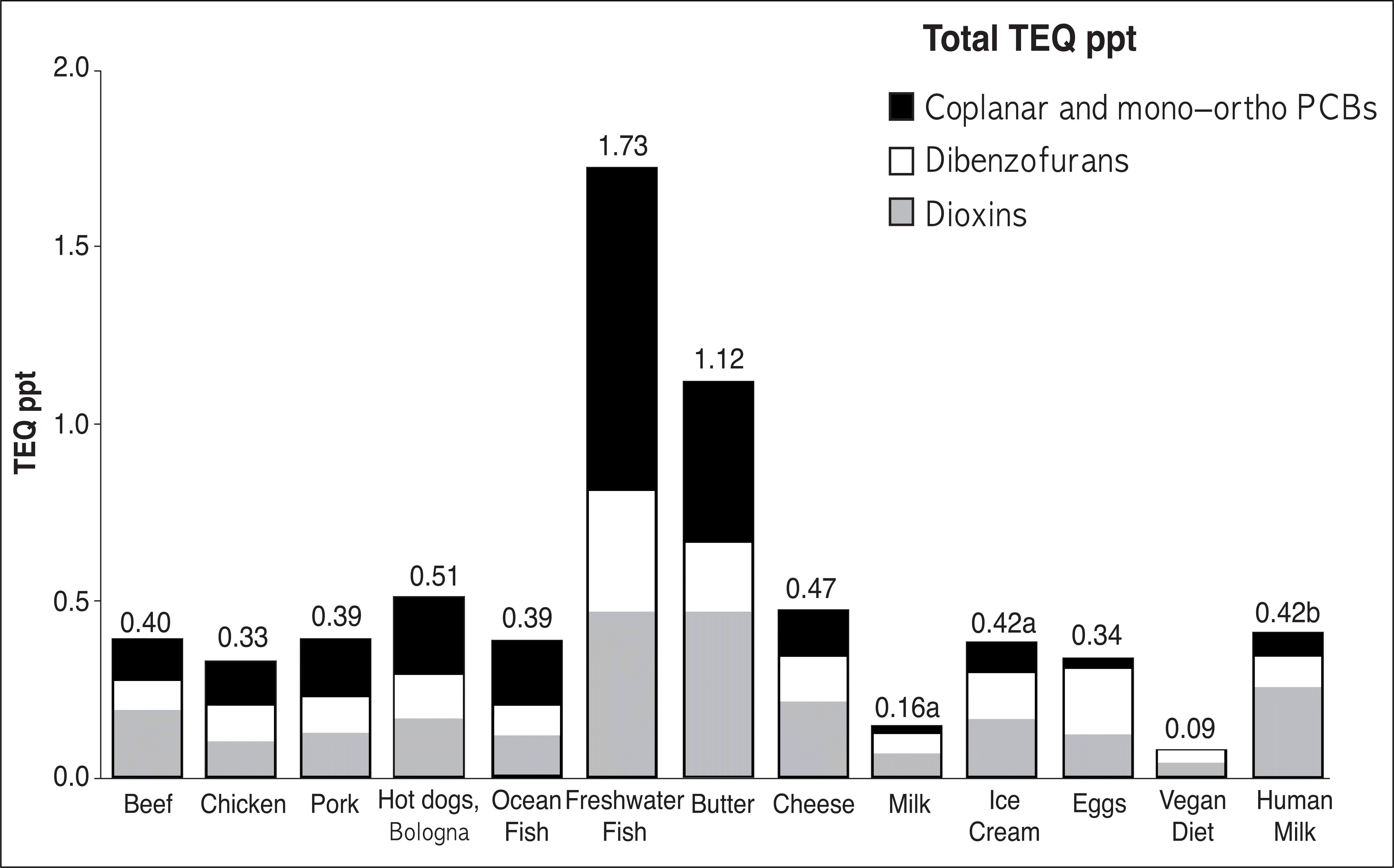Abstract
For the previous century, the humans have created an unintended and unwanted problem of endocrine disruptors as a potential threat to our public health. By the name of industrialization, endocrine disruptors are smuggling in the everyday life of people today. Although there are much debate on the reality of their emerging health threat, it is no doubt that there are certain classes of compounds that have the potential to affect hormonal status adversely, leading to abnormal development, reproductive dysfunction, and some cancers. The classes of endocrine disruptors are extensively diverse and even more increasing, such as, polychlorinated biphenyls (PCBs), dioxins, dieldrin, bisphenol A and toxaphene. Although these endocrine disruptors have been prohibited or tightly regulated, many of them are still unrecognized and still used without knowing their potential threat to the biological world. Once they are released into the environment, they usually persist without degradation and even undergo bioaccumulation and bioconcentration in food chain. Comparing with the great concern over the public health, we do not have enough information for these issues. It is now clear that we need further extensive studies for the risk assessment and the protection of human and ecological health from the potential hazards of endocrine disruptors. This article introduces a breif overview of the current status of our knowledge and research on endocrine disruptors.
References
1. Terri Damstra, Sue Barlow, Aake Bergman, Robert Kavlock, Glen Van Der Kraak, ed. Global assessment of the state?of? the?science of endocrine disruptors, from the homepage of The International Programme on Chemical Safety (IPCS). 2002;WHO/PCS/EDC/02.2 (. http://www.who.int/ipcs/publications/new_issues/endocrine_disruptors/en/.
2. Van den Berg M, Birnbaum LS, Denison M, De Vito M, Farland W, Feeley M, Fiedler H, Hakansson H, Hanberg A, Haws L, Rose M, Safe S, Schrenk D, Tohyama C, Tritscher A, Tuomisto J, Tysklind M, Walker N, Peterson RE. The 2005 World Health Organization Reevaluation of Human and Mammalian Toxic Equivalency Factors for Dioxins and Dioxin? Like Compounds. Toxicological Sciences. 2006; 93:223–241.
3. Pandora's box: ‘Goodbye, Mrs. Ant', produced by Adam Curitis. 1959. ;BBC (. http://www.archive.org/details/GoodbyeM1959_2/.
4. Cohn BA, Cirillo PM, Wolff MS, Schwingl PJ, Cohen RD, Sholtz RI, Ferrara A, Christianson RE, van den Berg BJ, Siiteri PK. DDT and DDE exposure in mothers and time to pregnancy in daughters. Lancet. 2003; 361:2205–2206.

5. Sharpe RM. Reproductive biology. Another DDT connection. Nature. 1995; 375:538–539.
6. McMartin KE, Kennedy KA, Greenspan P, Alam SN, Greiner P, Yam J. Diethylstilbestrol: a review of its toxicity and use as a growth promotant in food?producing animals. J Environ Pathol Toxicol. 1978; 1:279–313.
7. Smith OW, Gabbe SG. Diethylstilbestrol in the prevention and treatment of complications of pregnancy. 1948. Am J Obstet Gynecol. 1999; 181:1570–1571.
8. Dieckmann WJ, Davis ME, Rynkiewicz LM, Pottinger RE. Does the administration of diethylstilbestrol during pregnancy have therapeutic value? Am J Obstet Gynecol. 1953; 66:1062–1081.

9. Direcks A, Hoen E. 'DES: The Crime Continues.' In: McDonnell K, ed. Adverse Effects: Women and the Pharmaceutical Industrv. Toronto, Canada. 2006. 41–50.
10. Herbst AL, Scully RE. Adenocarcinoma of the vagina in adolescence. A report of 7 cases including 6 clear?cell carcinomas (so?called mesonephromas). Cancer. 1970; 25:745–757.
11. Gill WB, Schumacher GF, Bibbo M, Straus FH 2nd, Schoenberg HW. Association of diethylstilbestrol exposure in utero with cryptorchidism, testicular hypoplasia, and semen abnormalities. Journal of Urology. 1979; 122:36–39.

12. Jensen S. Report of a new chemical hazard. New Scientist. 1966; 32:612.
13. Gustafsson O, Andersson P, Axelman J, Bucheli TD, Komp P, McLachlan MS, Sobek A, Thorngren JO. Observations of the PCB distribution within and in?between ice, snow, ice?rafted debris, ice?interstitial water, and seawater in the Barents Sea marginal ice zone and the North Pole area. Sci Total Environ. 2005; 342:261–279.

14. Jensen AA. Polychlorobiphenyls (PCBs), polychlorodibenzo? p?dioxins (PCDDs) and polychlorodibenzofurans (PCDFs) in human milk, blood and adipose tissue. Sci Total Environ. 1987; 64:259–293.
15. Loganathan BG, Kannan K. Global organochlorine contamination trends: an overview. Ambio. 1994; 23:187191.
16. Schecter A, Cramer P, Boggess K, Stanley J, Papke O, Olson J, Silver A, Schmitz M. Intake of dioxins and related compounds from food in the U.S. population. Journal of Toxicology and Environmental Health, Part A. 2001; 63:1–18.

17. 'EPA Dioxin Reassessment' Summary 4/94? 1:p.37. http://www.ejnet.org/dioxin/.
18. 'Fooling with Nature' PBS Frontline. http://www.pbs.org/wgbh/pages/frontline/shows/nature/gallery/.
19. Sharpe RM, Fisher JS, Millar MM, Jobling S, Sumpter JP. Gestational and lactational exposure of rats to xenoestrogens results in reduced testicular size and sperm production. Environ Health Perspect. 1995; 103:1136–1143.

20. Ahlborg UG, Lipworth L, Titus?Ernstoff L, Hsieh CC, Hanberg A, Baron J, Trichopoulos D, Adami HO. Organochlorine compounds in relation to breast cancer, endometrial cancer, and endometriosis: an assessment of the biological and epidemiological evidence. Crit Rev Toxicol. 1995; 25:463–531.

21. Alaluusua S, Calderara P, Gerthoux PM, Lukinmaa P?L, Ko-vero O, Needham L, Patterson Jr. DG, Tuomisto J, MocarelliP. Developmental Dental Aberrations After the Dioxin Accident in Seveso. Environmental Health Perspectives. 2004; 112:1313–1318.
22. Peterson RE, Theobald HM, Kimmel GL. Developmental and reproductive toxicity of dioxins and related compounds: cross?species comparisons. Critical Review in Toxicology. 1993; 23:283–335.

23. Baccarelli A, Mocarelli P, Patterson Jr. DG, Bonzini M, Pe-satori AC, Caporaso N, Landi MT. Immunologic Effects of Dioxin: New Results from Seveso and Comparison with Other Studies. Environ Health Perspect. 2002; 110:1169–1173.
24. Park MJ, Lee SK, Yang JY, Kim KW, Lee SY, Lee WT, Chung KH, Yun YP, Yoo YC. Distribution of organochlorines and PCB congeners in Korean human tissues. Arch Pharm Res. 2005; 28:829–838.

25. Han SY. Study of the effects of endocrine disruptors on human health, Presentation of the results for the evaluation of endocrine disruptors, National Institute of Toxicological Research. 2000 (. http://www.kfda.go.kr/open_content/kfda/text/news/press_view.php?av_pg=94&service_gubun=. &textfield=&keyfield=&scq=33).
26. Han SW. Lee MS, Choi HK, Choi YD, Lee WH, Kim JH, Kim BH, Seo JT, Kim JH, Lee HY, Nho JH, Jeon HJ, Lee SY, Kim CS. Study on the relationship between Korean male sperm counts and urogenital diseases (VI). 2004 Report of the evaluation of endocrine disruptors. National Institute of Toxi? cological Research. Vol.6:. 329–357.
27. Mauduit C, Florin A, Amara S, Bozec A, Siddeek B, Cunha S, Meunier L, Selva J, Albert M, Vialard F, Bailly M, Benahmed M. Long?term effects of environmental endocrine disruptors on male fertility. Gynecol Obstet Fertil. 2006; 34:978–984.
Figure 1.
General mechanism of receptor?mediated actions of endocrine disruptors. 1. Normal: body's hormone binds to its receptor and elicits normal hormonal action 2. Blocked: endocrine disruptor binds to hormone receptor, blocking hormone? receptor binding and its action 3. Insufficient: endocrine disruptor binds to hormone receptor, mimicking normal hormonal action insufficiently 4. Excessive: endocrine disruptor binds to hormone receptor, mimicking normal hormonal action excessively

Figure 3.
Background TEQ exposures for North America by pathway. TEQ (Toxic Equivalence Factor). TEQs, are used to report the toxicity?weighted masses of mixtures of dioxins. Dioxin compounds are given equal or lower Toxicity Equivalence Factors (TEFs), with each number roughly proportional to its toxicity relative to that of 2,3,7,8?TCDD whose TEF=1. Developed by the World Health Organization (17).

Figure 4.
Wildlife species affected by endocrine disruptors. 1. "Freaky Frogs", Frogs with various kinds of deformities have been found in many U.S. states and Canadian provinces from 1995. The top candidates are mammade pesticides, but not clear yet. The research is still ongoing. 2. "Teeny Weenies", Male alligator in Florida's lake Apopka has 25% smaller penis size than in normal males, due to the severe chemical spill of DDT and dicofol into the lake. 3. "Drastic Deformities", Cormorants in the Great Lakes have had nineteen types of deformities, due to the dioxin?like PCB contamination of the lake. 4. "Infertile Felines", Florida's panthers have reproductive problems of low sperm counts, abnormal sperm, undescended testicles, thereby becoming endangered species, due to dioxin, DDT, PCBs etc. 5. "Humans at Risk?", Are environmental pollutants the real culprit in declines in male fertility and increases in breast cancer? (18)

Table 1.
Endocrine disruptors having different mode of actions
Table 2.
Comparison of β- BHC, p, p'-DDT, p, p'-DDE concentrations in human adipose tissue (Unit: μg/kg lipid weight basis)




 PDF
PDF ePub
ePub Citation
Citation Print
Print



 XML Download
XML Download